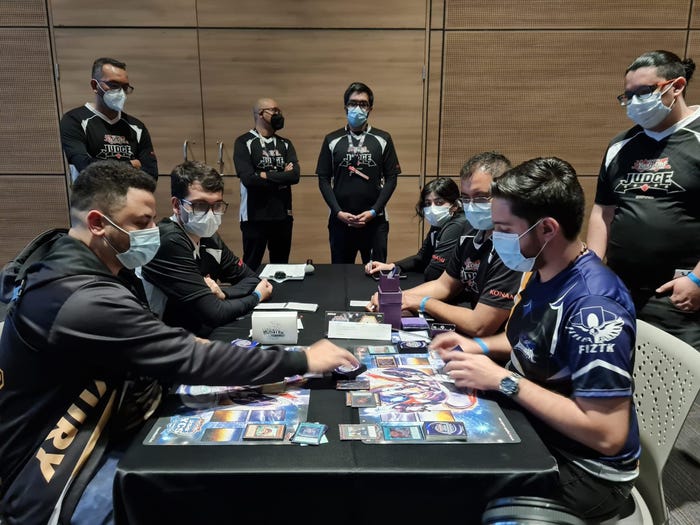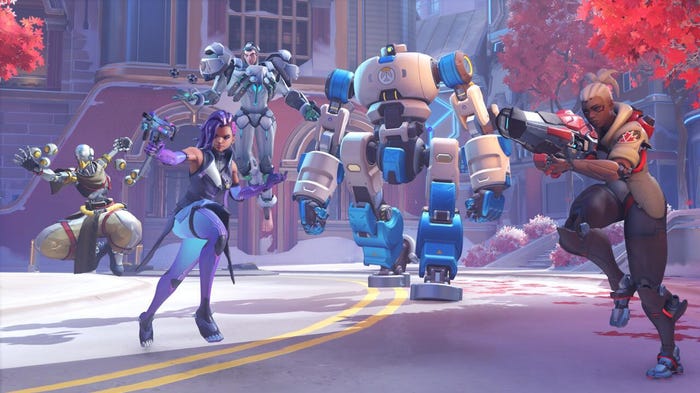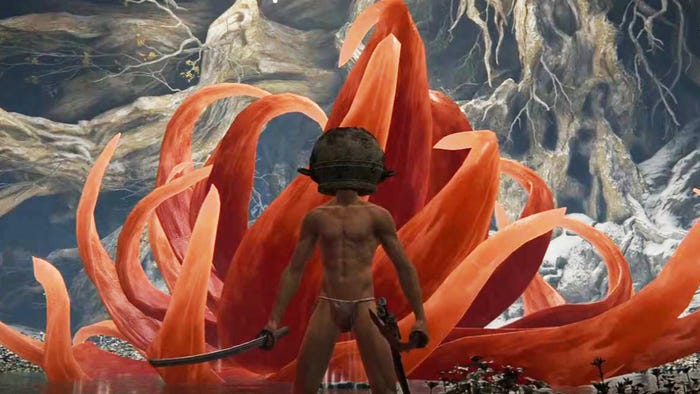Trending
Opinion: How will Project 2025 impact game developers?
The Heritage Foundation's manifesto for the possible next administration could do great harm to many, including large portions of the game development community.

Featured Blog | This community-written post highlights the best of what the game industry has to offer. Read more like it on the Game Developer Blogs or learn how to Submit Your Own Blog Post
If game designers are to have any success combating toxicity, we must acknowledge that our own design choices are often the underlying systemic cause, and that it is our responsibility to change them.

In his video “we need to talk (about how we talk),” trading card game streamer Joseph “MBT” Rothschild criticizes the Yu-Gi-Oh! community for its overly harsh attitudes towards players who pick suboptimal cards for the sake of variety. This kind of toxicity is unfortunately common within gaming communities, especially now that the rise of social media and online competition have made it easier than ever to hurl insults at one’s fellow players. Instead of accepting this antisocial behavior as inevitable, however, MBT blames Konami for how narrowly it allows Yu-Gi-Oh! to be played: “… Having one format, that is constantly dominated by a design choice to make the most powerful [deck] of all time… means that the Yu-Gi-Oh! community has, by and large, coalesced around an idea of competition that excludes other ways of playing the game.”
Unlike most other competitive card games, in which there are multiple alternative rulesets for casual play, Yu-Gi-Oh!’s singular official format is designed for use at tournaments. While some fans have devised casual formats unofficially, the only play style that Konami supports and legitimizes is cutthroat competition using the latest cards. “There are just not [sic] ways to enjoy Yu-Gi-Oh! casually without explicitly flying in the face of Konami design principles,” MBT explains. “At the end of the day, Yu-Gi-Oh!’s only format being the most sweaty, tryhard one, has instilled in Yu-Gi-Oh! players a belief that you must be attempting to win at all times if you are to be taken seriously.” While MBT’s point was made about Yu-Gi-Oh! specifically, it implies a greater lesson that all game designers should take to heart: The behavior of a game’s community is not random or accidental, but rather a byproduct of how the game itself is designed.

“A photo of the final match of the 250th Yu-Gi-Oh! Championship Series tournament, held in Bogota, Colombia. Image taken from Konami’s official event coverage.”
This is not to say that some games inherently attract more antisocial players than others. In fact, during the multiple Yu-Gi-Oh! tournaments I’ve attended, the vast majority of players I encountered were kind and polite. Rather, the brunt of toxicity comes not from individual bad actors, but on a systemic level, from the ways a game’s design brings out antisocial behavior from otherwise normal people. A key example of this phenomenon can be seen by comparing two relatively similar online shooters, Team Fortress 2 and Overwatch 2. In terms of curbing toxic individuals, Overwatch 2 is vastly superior, possessing a robust reporting system and a responsive support team; by comparison, Team Fortress 2’s outdated and easily-bypassed banning tools have created an environment where it is not uncommon to encounter a player who named their shotgun after a racial slur. Despite this, however, the experience of many players, myself included, is that Overwatch 2 is significantly more toxic than its 2007 ancestor, in large part due to how its design encourages toxicity on a systemic level.
Every match of Overwatch 2 is played between teams of five players each, and these teams will fall apart if any of their five players fail to perform their chosen hero’s specialized role. Tanks and Healers, for example, form a symbiotic relationship where the healer sustains the tank and the tank protects the healer. With optimal cooperation, this codependent dynamic can be thrilling, but more often than not it results in a shouting match between the tank and the healer as they blame each other for their loss.

Caption: “A coordinated team attack in Overwatch 2. Image taken from GameSpot’s review.”
Team Fortress 2, however, is most often played 12v12, thus greatly limiting the social pressure for each individual player to do well. Team Fortress 2’s classes are also more independent and customizable than Overwatch 2’s heroes, allowing players to have a good time even if their team is uncooperative. For example, if a Pyro player’s team lacks a good Medic, they can equip the Back Scratcher weapon, which boosts the health received from health packs and lets the Pyro survive longer on their own. If an Overwatch 2 player’s team lacks a competent healer, however, their only recourse is to yell at said healer until they improve. As lead designer Robin Walker explains, Team Fortress 2’s more individualistic approach was intended to work around team dysfunction as much as possible, stating “...we started with the base assumption that [the players] were all ignoring everyone else, because it turns out that’s the way most players work.” By comparison, Overwatch 2 forces players to rely on their teammates at every step, and the result is that otherwise calm players, myself included, will find themselves hurling insults at any teammate who so much as picks a hero that the community considers weak.
While toxicity most often occurs during competitive matches, even games that are primarily single player can color their communities through their design. An example would be FromSoftware’s notoriously hard Souls series, whose community has garnered a reputation for mocking weaker players with the snarky phrase “git gud.” This behavior is not merely a result of the games’ difficulty, but a byproduct of how they contextualize player-to-player interactions through their invasion mechanic. Once certain conditions are met, it is possible to “invade” another player’s game without their consent, with the invader being treated as an enemy who is rewarded for killing the invaded player. While players can defeat invaders, or temporarily prevent invasions by collecting specific items, the game still puts the onus on the victim if they don’t want to be abruptly preyed upon in their otherwise single player experience. As games writer Chris Franklin says in his video on Dark Souls III, “I’d argue the game set the tone for its own community through its multiplayer mechanics… The game’s invasion mechanic is basically a mode for trolls who like to make other people miserable.” While “git gud” is rarely invoked in reference to invasions specifically, it is through the invasion mechanic that cruelty towards lower-skill players is legitimized and encouraged.

Caption: “Let Me Solo Her, in his famously goofy signature outfit. Image taken from this article on PC Gamer.”
However, just as a game’s design can impact its community negatively, so too can it promote cooperation and kindness, as shown by the Souls series’ open world successor, Elden Ring. While players have been able to leave messages to other players ever since the release of Demon’s Souls in 2009, Elden Ring doles out rewards for those who leave messages that are rated positively by the community, allowing for even complete strangers to engage in mutually beneficial cooperation. Similarly, while Elden Ring retains invasions from the Souls games, it also retains the “summoning” mechanic, which lets weaker players invite stronger ones into their game to help them through a particularly challenging section. The most famous example of this mechanic in action is the feats of Klein Tsuboi, better known as “Let Me Solo Her.” Let Me Solo Her would join as a summon to players who were struggling in the notoriously difficult “Malenia, Blade of Miquella” boss fight, and as his name implies, he would defeat the boss entirely on his own. As Jake Selway of GameRant writes, “The massive amount of skill displayed by the player in single-handedly taking down such a difficult boss helped push Let Me Solo Her to community stardom, with the fact that they were also helping out other players only boosting the buzz even further.” Unlike the team-based shooters mentioned previously, it is entirely possible for players to complete Elden Ring on their own, so the frustration they feel after a loss will be largely directed at the game itself rather than their potential teammate. But by including the summoning mechanic, FromSoftware created the conditions for the “face” of Elden Ring’s community to become synonymous with selfless compassion.
Almost every game will inevitably attract a wide breadth of personality types, to the point that no game community can be called “positive” or “toxic” based on its members alone. However, just as the Souls games’ invasions amplify the voices of its most elitist trolls, so too do summons empower kinder players to uplift the community as a whole. If game designers are to have any success combating toxicity, we must acknowledge that our own design choices are often the underlying systemic cause, and that it is our responsibility to change them.
(Originally published on rhysframptongames.com.)
Read more about:
Featured BlogsYou May Also Like